In a world where the pace of life can often feel overwhelming, bringing natural elements into your home offers a breath of fresh air and a serene escape. Whether you’re just beginning your journey in home decor or are a seasoned enthusiast looking to refine your space, incorporating nature’s beauty into your interiors can transform your living environment into a sanctuary of calm and inspiration. By harnessing the gentle elegance of the natural world, you can create a harmonious balance that not only elevates aesthetics but also nurtures well-being.
This article will guide you through 11 innovative ways to seamlessly blend natural elements into your home, enhancing both functionality and style. From the soothing textures of wood and stone to the vibrant hues of indoor plants, you’ll discover practical tips and creative ideas that cater to every level of expertise. Embrace the opportunity to redefine your living space with nature’s timeless charm, and unlock the secrets to making your home a true reflection of tranquility and warmth.
Choosing Earthy Color Palettes
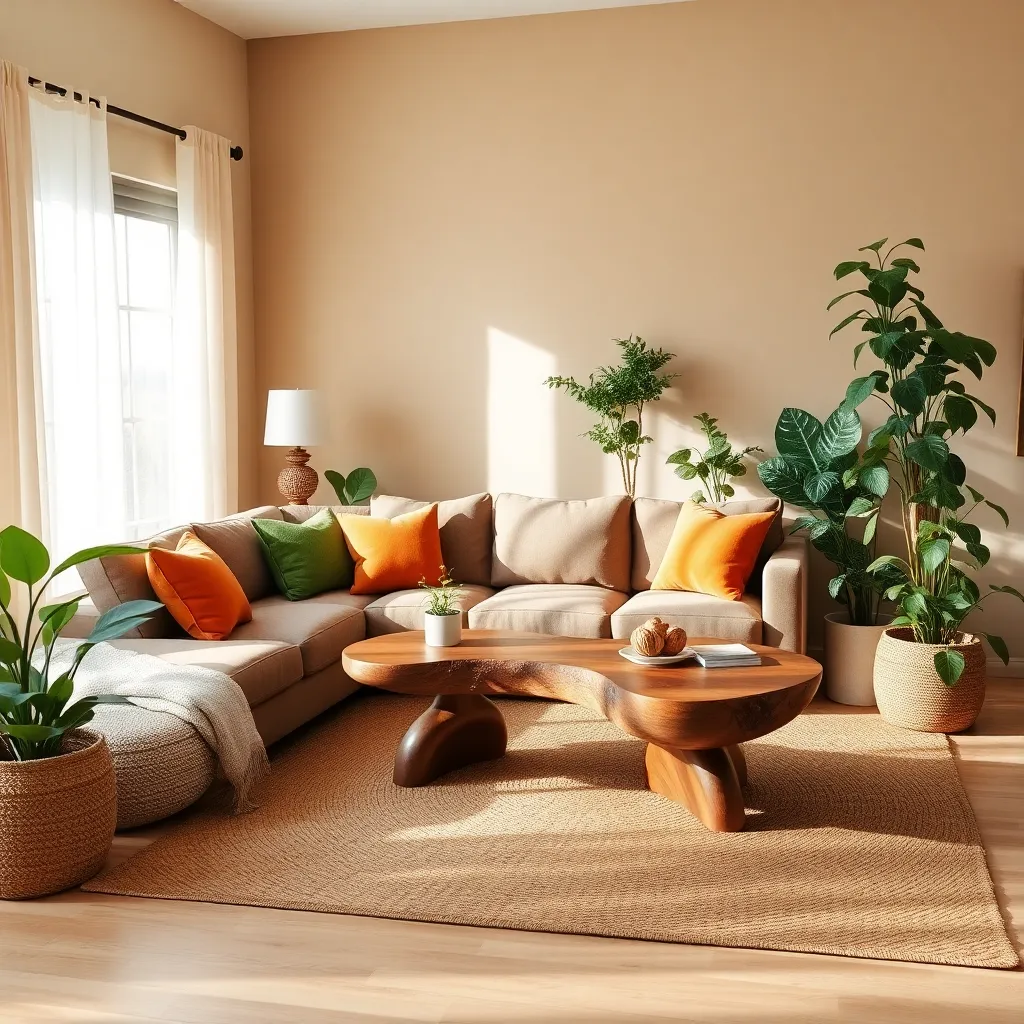
Integrating earthy color palettes into your home can create a warm and inviting atmosphere that bridges the indoors with the natural world. Start by choosing shades like terracotta, olive green, and soft browns, which can be paired with neutral tones to create a balanced and harmonious interior.
For beginners looking to introduce these hues, consider starting with accent walls or textiles such as throw pillows and curtains, which are easy to change out as your taste evolves. More experienced decorators might explore painting entire rooms or selecting furniture pieces in rich, earthy tones to make a bold yet comfortable statement.
When selecting materials, opt for natural fabrics like linen or wool in earthy shades to maintain a cohesive look. Additionally, incorporating wood elements—such as oak or walnut furniture—can enhance the natural feel of the space, making these color palettes truly come alive.
For a polished look, layer various textures within your chosen color palette to add depth and interest. Mix matte and glossy finishes, or combine rough-hewn woods with smooth leather accents to create a tactile, multi-dimensional environment that captivates the senses.
Incorporating Live Plants and Greenery
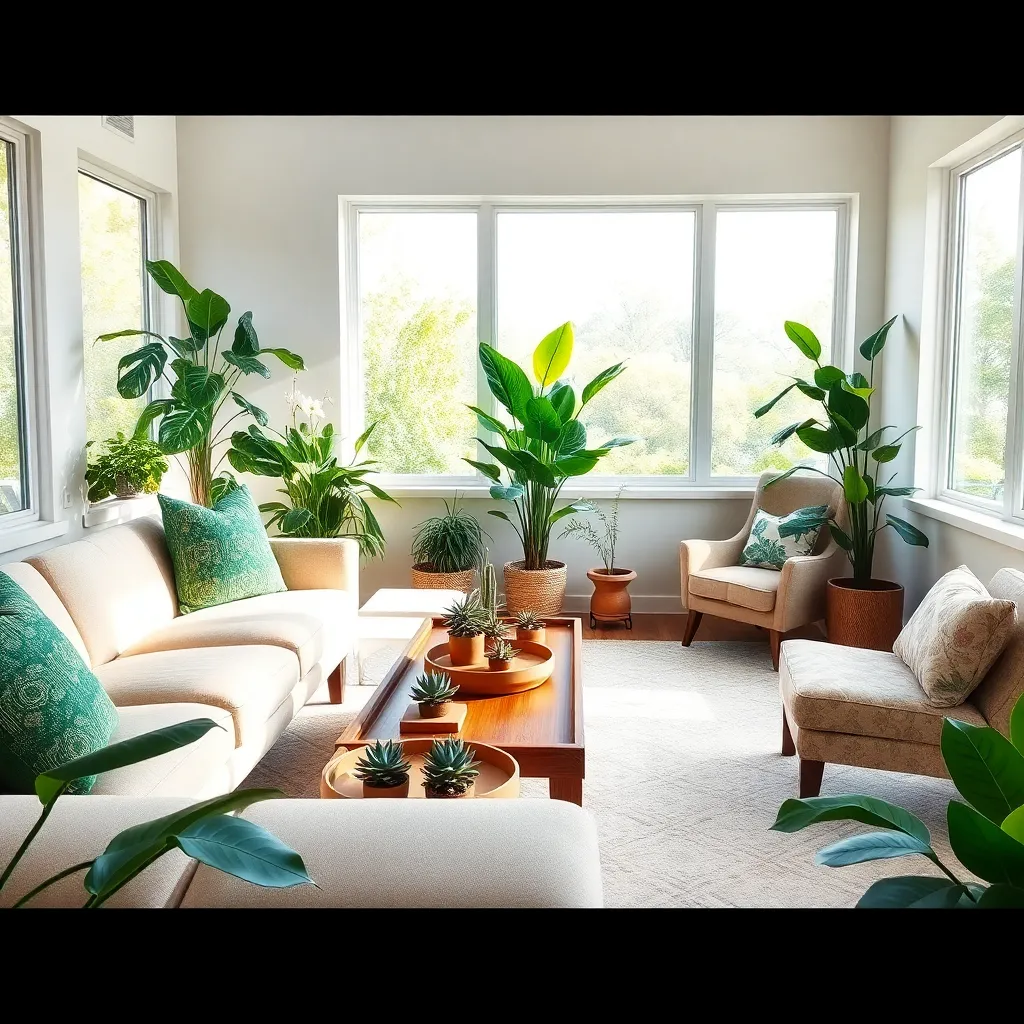
Incorporating live plants and greenery into your home can dramatically enhance the atmosphere by introducing a touch of nature. Start by selecting plants that suit your home’s light conditions—such as low-light tolerant snake plants for dimmer spaces or sun-loving succulents for brighter areas.
Positioning is crucial to ensure your plants thrive and complement your interior. Consider placing a tall, leafy plant like a fiddle leaf fig in a corner to create a focal point, or use smaller plants on shelves and tables to add layers and texture to your decor.
For those new to plant care, start with easy-to-maintain varieties like pothos or ZZ plants, which are forgiving and adapt well to various environments. More experienced plant enthusiasts might explore unique species like bird of paradise or orchids to introduce color and exotic flair.
To seamlessly integrate plants into your existing decor, select planters that complement your interior style. Use ceramic pots with earthy tones for a rustic feel, or opt for sleek, metallic finishes in modern spaces to create a cohesive look.
Using Natural Wood Accents
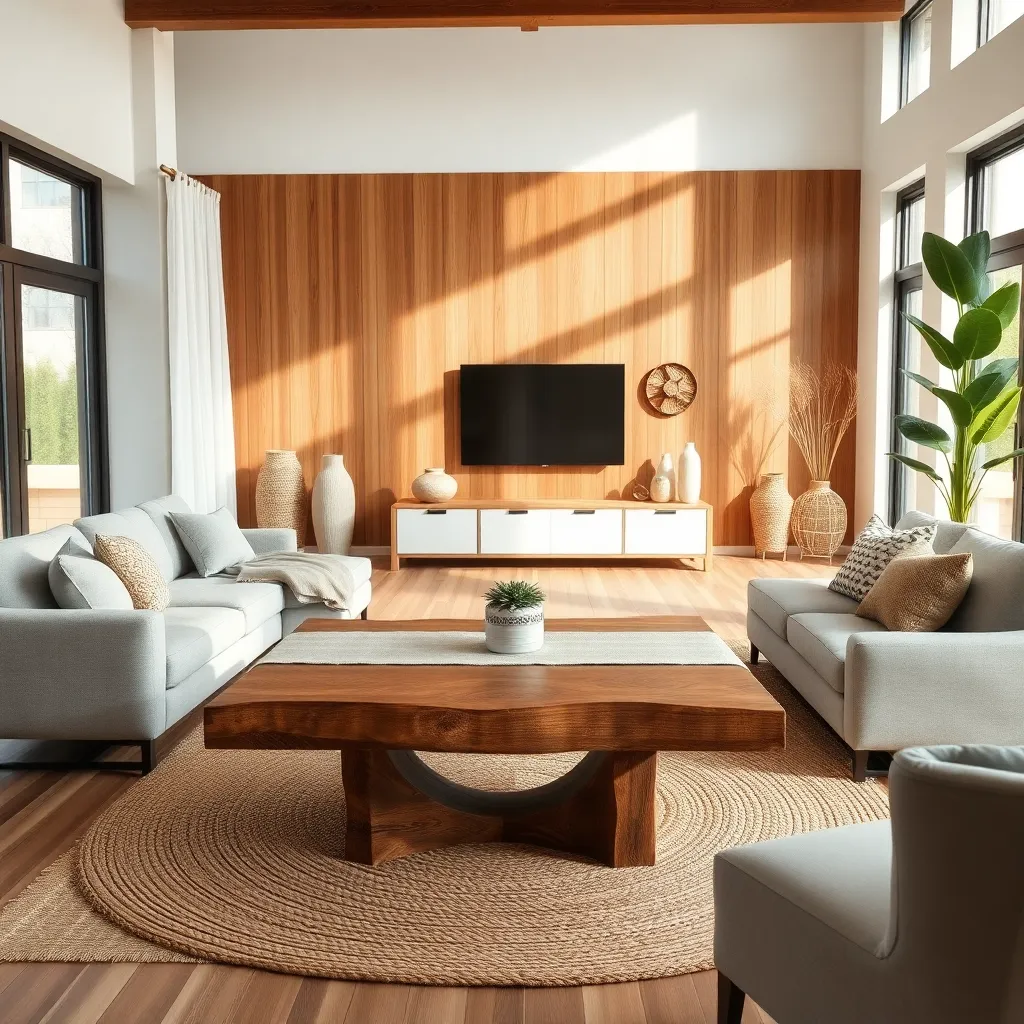
To seamlessly integrate natural wood accents into your home, start by selecting pieces that showcase the beauty of the wood grain. Opt for items like live-edge coffee tables or hand-carved wooden bowls which can serve as conversation starters while adding warmth and texture to your space.
Consider mixing wood tones to create depth and visual interest in a room. Pairing a light oak dining table with darker walnut chairs, for instance, can create a balanced yet dynamic look that suits a variety of interior styles.
When choosing wood accents, think about their placement to enhance your home’s natural light. Position a wooden console table near a window to highlight its natural beauty and allow the wood’s tones to shine in the sunlight.
For a more advanced touch, consider using wood in unexpected places, such as a wooden feature wall or ceiling beams. These elements can add architectural interest and a cozy, rustic charm to modern spaces, creating a perfect blend of old and new.
Embracing Stone and Marble Features
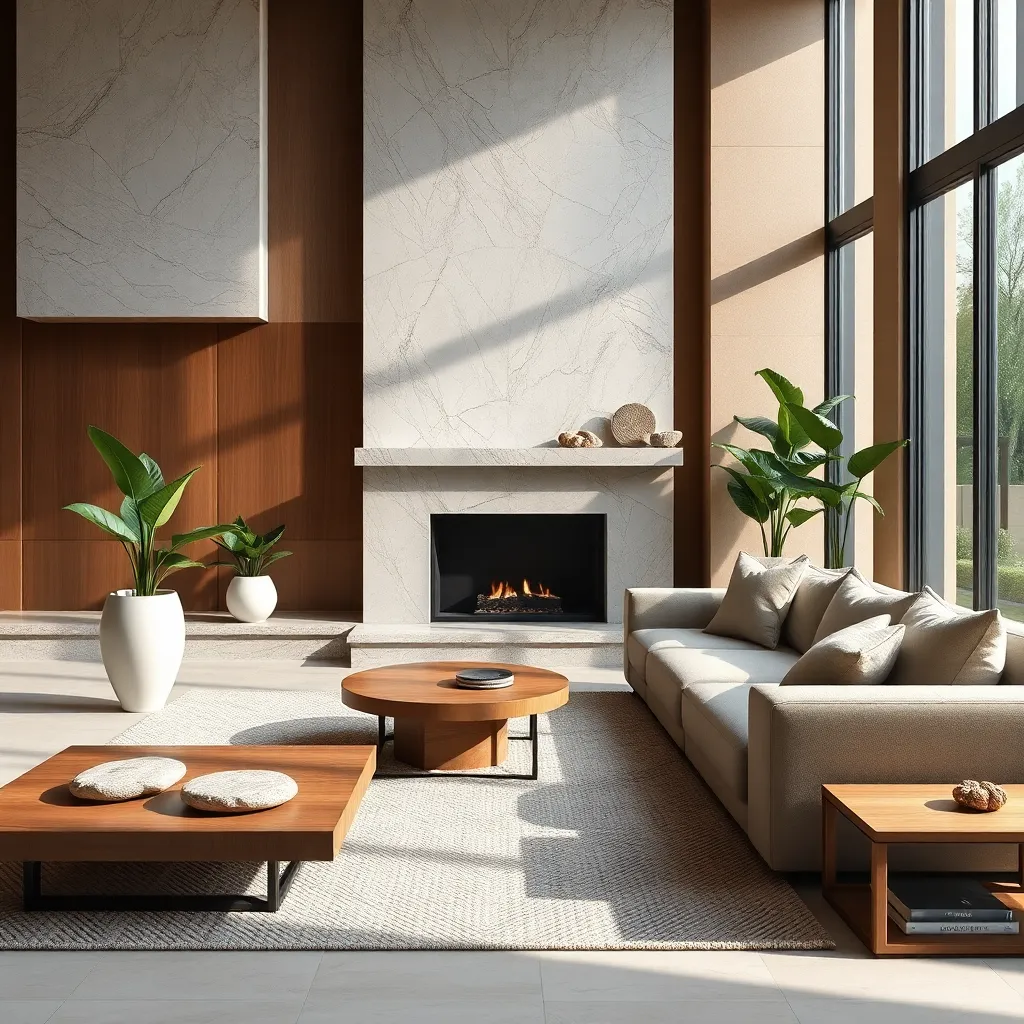
Stone and marble features can dramatically elevate the sophistication of your home by adding a touch of luxury and timeless elegance. To incorporate these materials effectively, consider using marble countertops or stone backsplashes in your kitchen, which not only enhance aesthetics but also offer durability.
Additionally, a marble coffee table or a stone accent wall can become a focal point in your living space, drawing the eye and creating a sense of grandeur. When selecting stone or marble pieces, pay attention to color and veining patterns to ensure they complement your existing decor.
For a seamless integration, mix stone and marble with softer materials like wood or textiles, creating a balanced and inviting environment. Experiment with different finishes, such as polished marble for a sleek look or honed stone for a more rustic appeal, to match your personal style.
Advanced decorators can explore inlay techniques or custom stone designs for a truly unique appearance. When planning your layout, consider lighting to highlight the natural beauty of stone and marble, using strategically placed fixtures or natural light to enhance their textures and colors.
Integrating Water Elements Creatively
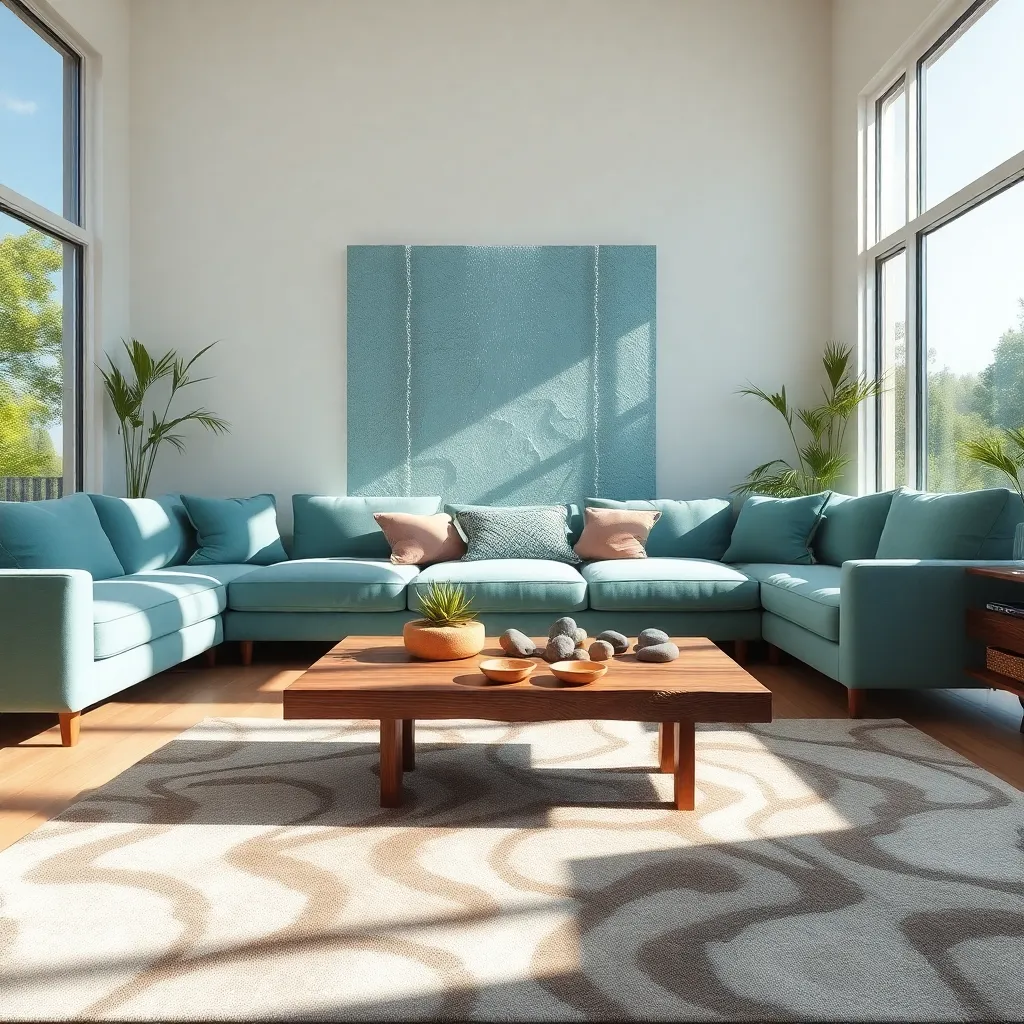
Integrating water elements into your home can create a serene and tranquil atmosphere that promotes relaxation. Consider adding a small indoor fountain near the entrance or living room to enhance the flow of energy and provide a soothing auditory backdrop.
For those with limited space, a tabletop waterfall or a wall-mounted water feature can be a perfect solution. These options require minimal maintenance and can easily become a focal point in any room, drawing the eye with their gentle cascades and reflective surfaces.
Choose materials such as glass, stone, or stainless steel for your water feature to complement various design styles, from ultra-modern to rustic. Use LED lights or strategically placed candles around the water element to create an enchanting ambiance during the evening.
Advanced decorators might explore integrating an aquarium within a wall or as part of a room divider to merge aquatic life with interior design. This approach not only adds movement and color but also requires thoughtful planning regarding filtration systems and lighting setups.
Maximizing Natural Light Exposure

Maximizing natural light exposure in your home can significantly enhance its ambiance and energy efficiency. Start by using sheer curtains or blinds, which allow sunlight to flood into a room while maintaining privacy. Opt for light-colored window treatments to avoid blocking the glow, and consider using reflective finishes such as gloss paint or metallic accents to bounce light around the room.
Consider the strategic placement of mirrors to further amplify the natural light. Mirrors can be positioned opposite windows to reflect sunlight deeper into the space, doubling the light effect. Choose large, decorative mirrors that complement your existing decor for both function and style. This technique not only brightens rooms but also creates an illusion of increased space, making your home feel more open and inviting.
Furniture choices play a crucial role in maximizing natural light exposure. Opt for pieces with slim profiles and lighter finishes to prevent them from overpowering the room and casting shadows. Select glass or acrylic furniture where possible, as these materials allow light to pass through, maintaining an airy feel. Arrange furniture in a way that allows light to flow freely, avoiding clutter near windows.
Choosing the right color palette is essential for enhancing natural light. Light, neutral colors on walls and ceilings can help reflect light, making the room appear brighter and larger. Incorporate soft pastels or whites to maximize the effect, and pair them with light-toned floors for a cohesive look. For a more advanced touch, consider adding glossy or semi-gloss paint finishes to further reflect light and create an elegant, luminous atmosphere.
Decorating with Organic Textiles
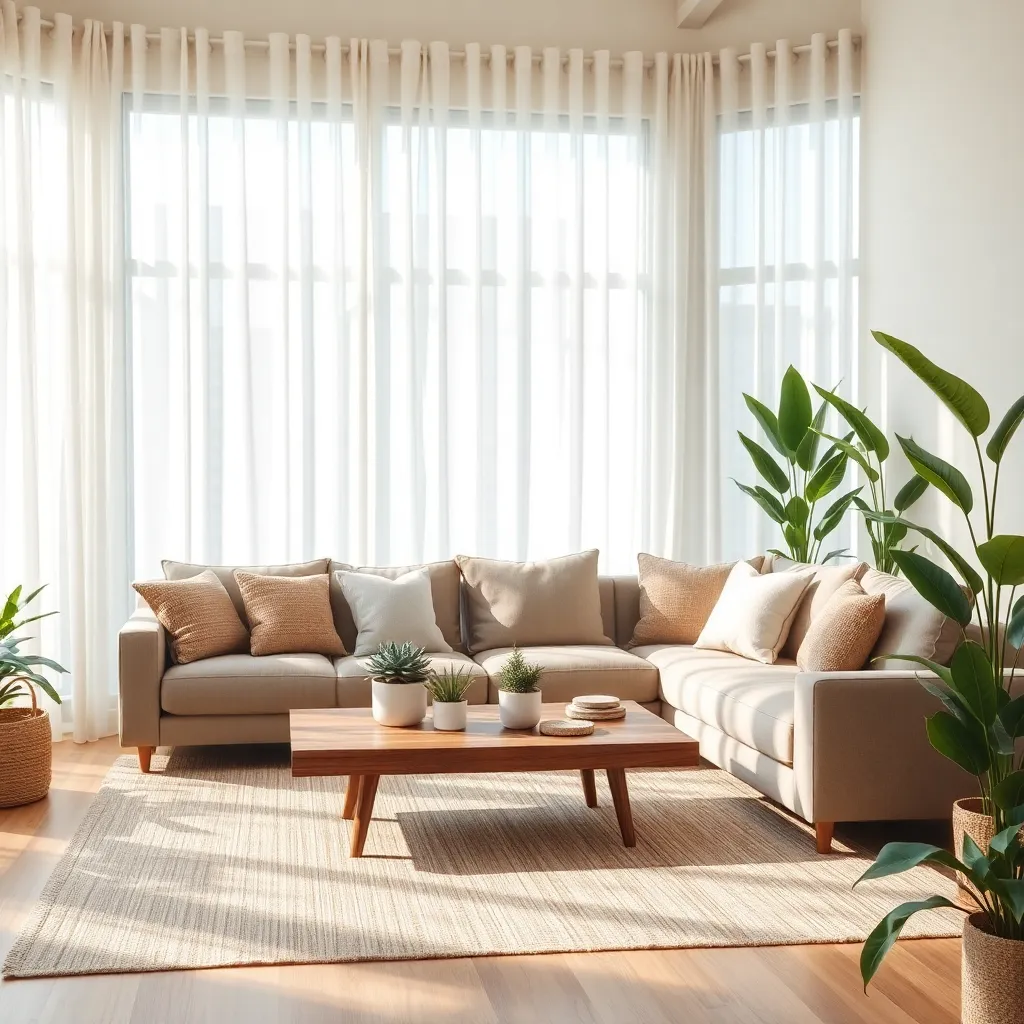
Incorporating organic textiles into your home is a brilliant way to introduce natural elements while enhancing comfort and style. Start with choosing materials like cotton, linen, or wool, which not only offer a soft touch but also bring a sense of warmth and coziness to any room.
For beginners, swapping out synthetic throws and pillows for organic cotton or linen options can make a noticeable difference. Opt for neutral tones such as whites, beiges, and greys to keep the look versatile, or introduce soft pastels to add a subtle pop of color without overwhelming the space.
Advanced decorators might experiment with layering different textures to add depth and interest. Consider pairing a plush wool throw with a linen cushion, or combining a hand-woven jute rug with a silk accent pillow to create a harmonious blend of tactile sensations.
Placement is key when decorating with textiles, as it can significantly influence the room’s atmosphere. Drape a lightweight linen throw over a sofa for a casual, inviting look, or lay a richly textured wool rug under a seating area to anchor the space and provide a focal point.
Enhancing Spaces with Bamboo Decor
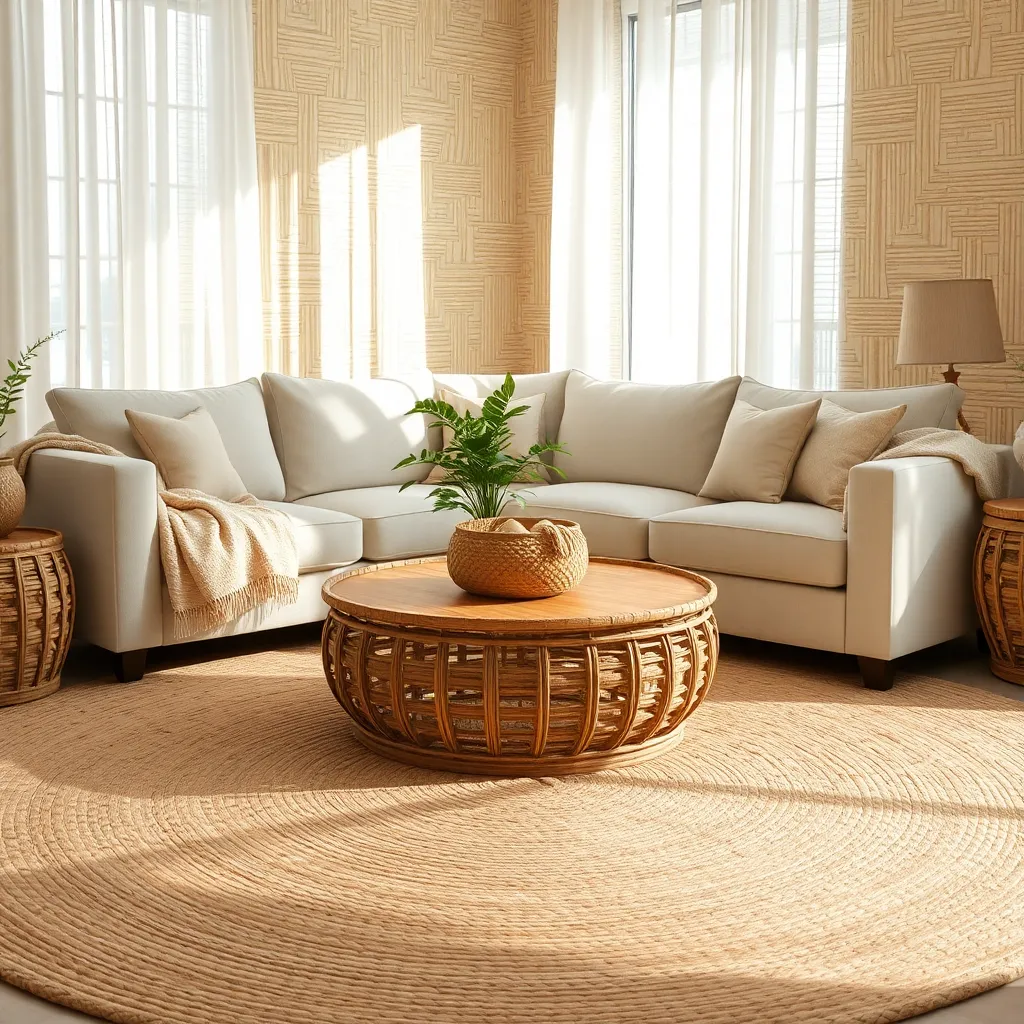
Incorporating bamboo decor into your home can add a touch of natural elegance and sustainability. Bamboo furniture is not only eco-friendly but also versatile enough to complement various design styles, from modern to bohemian.
Consider starting with a bamboo coffee table or side table to introduce this material into your living space. Pair these pieces with neutral-toned textiles to create a warm and inviting atmosphere that highlights the natural beauty of bamboo.
For those looking to make a bolder statement, a bamboo room divider can act as both a functional and decorative element. This can help define spaces in an open-plan area while adding texture and visual interest to the room.
Advanced decorators may explore using bamboo wall coverings or ceiling panels for a luxurious and unique touch. These elements can create a serene environment and are perfect for rooms where you want to emphasize tranquility, such as a bedroom or meditation area.
Designing with Recycled Materials
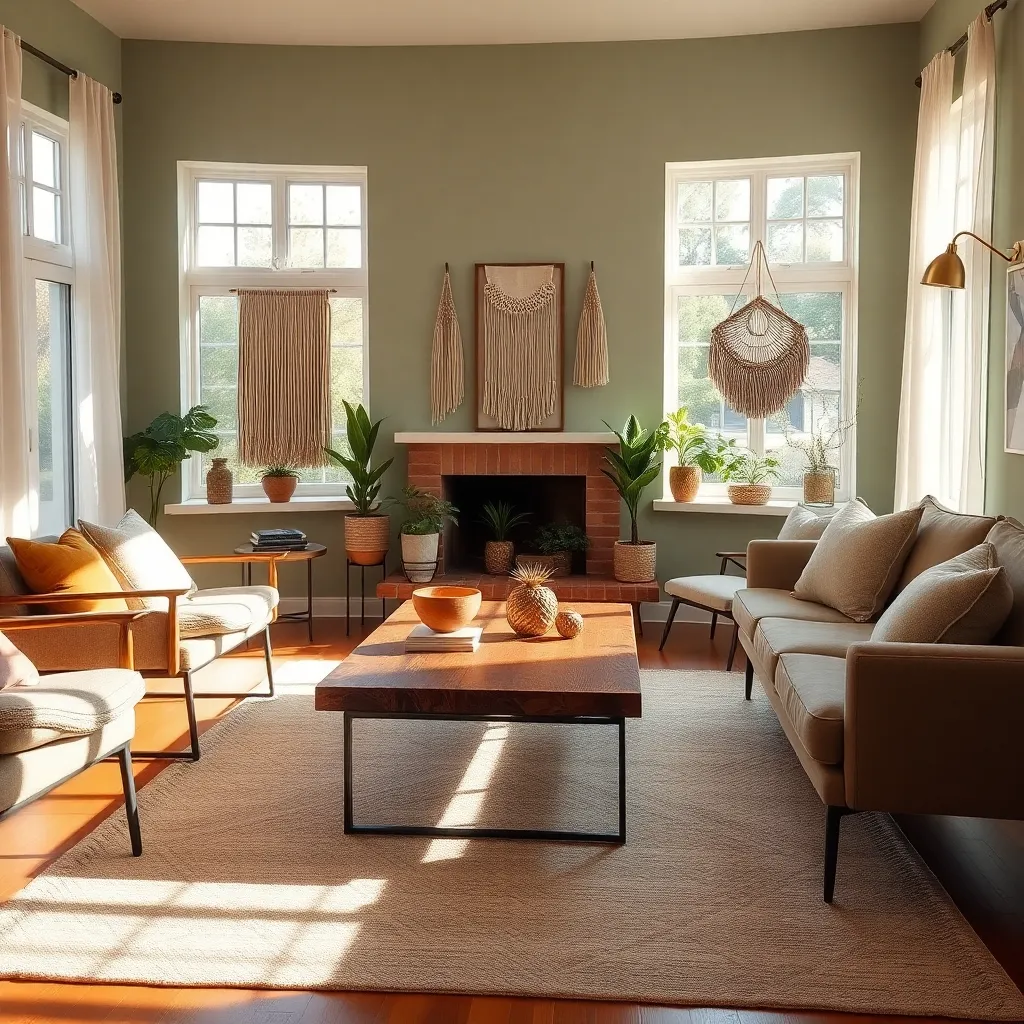
One of the most impactful ways to incorporate recycled materials into your home is through furniture made from reclaimed wood. This not only adds a unique, rustic charm but also supports sustainability. For beginners, start with small items like a coffee table or shelving unit. Place these pieces where they will be most appreciated, such as a living room or entryway, where guests can admire their intricate details.
Advanced decorators might consider larger installations, such as recycled metal wall art or upcycled lighting fixtures. These elements can serve as striking focal points in any room. Pair them with neutral tones to allow the recycled materials to stand out, or use them to complement other natural elements for a cohesive look. With careful placement and selection, these pieces can transform your space into an eco-friendly haven.
When selecting color schemes, consider using earthy tones that highlight the natural beauty of recycled materials. Colors like deep greens, browns, and warm grays can enhance the organic feel of your decor. For a more vibrant look, incorporate accents like throw pillows or vases in bold colors that contrast with the muted tones of recycled elements. This not only adds interest but also brings a lively energy to your home.
Incorporating recycled materials into your design doesn’t have to be overwhelming. Start with easy projects such as converting old pallets into wall art or using vintage crates for storage. These small changes can have a big impact, making your home both beautiful and environmentally friendly. By creatively reimagining materials, you promote sustainability while enhancing the aesthetic of your home.
Displaying Nature-Themed Artworks
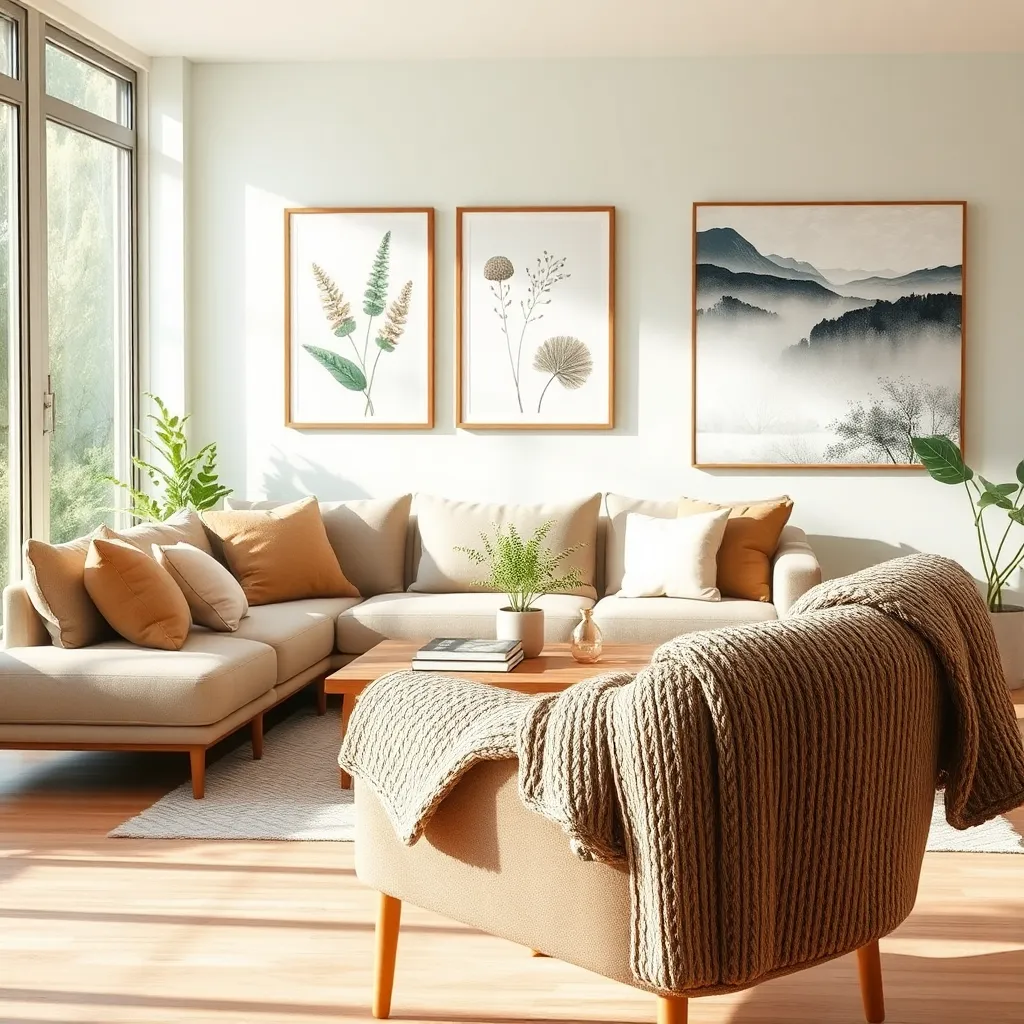
Incorporating nature-themed artworks into your home can instantly evoke a sense of calm and connection with the outdoors. Start with selecting pieces that reflect your local landscape or favorite natural scenes to create a personal connection.
When choosing artwork, consider the color palette to ensure it complements your existing decor. Opt for pieces that incorporate natural hues such as earthy greens, browns, and blues to create a harmonious flow throughout your space.
Placement is key to maximizing the impact of your nature-themed art collection. Hang larger pieces at eye level in living areas or above furniture to draw attention and create a focal point.
For a cohesive look, group smaller artworks together using similar frames or mats, creating a curated gallery wall that tells a story. Mix different styles—such as photography, paintings, or botanical prints—to add depth and interest.
Crafting Outdoor-Inspired Interiors
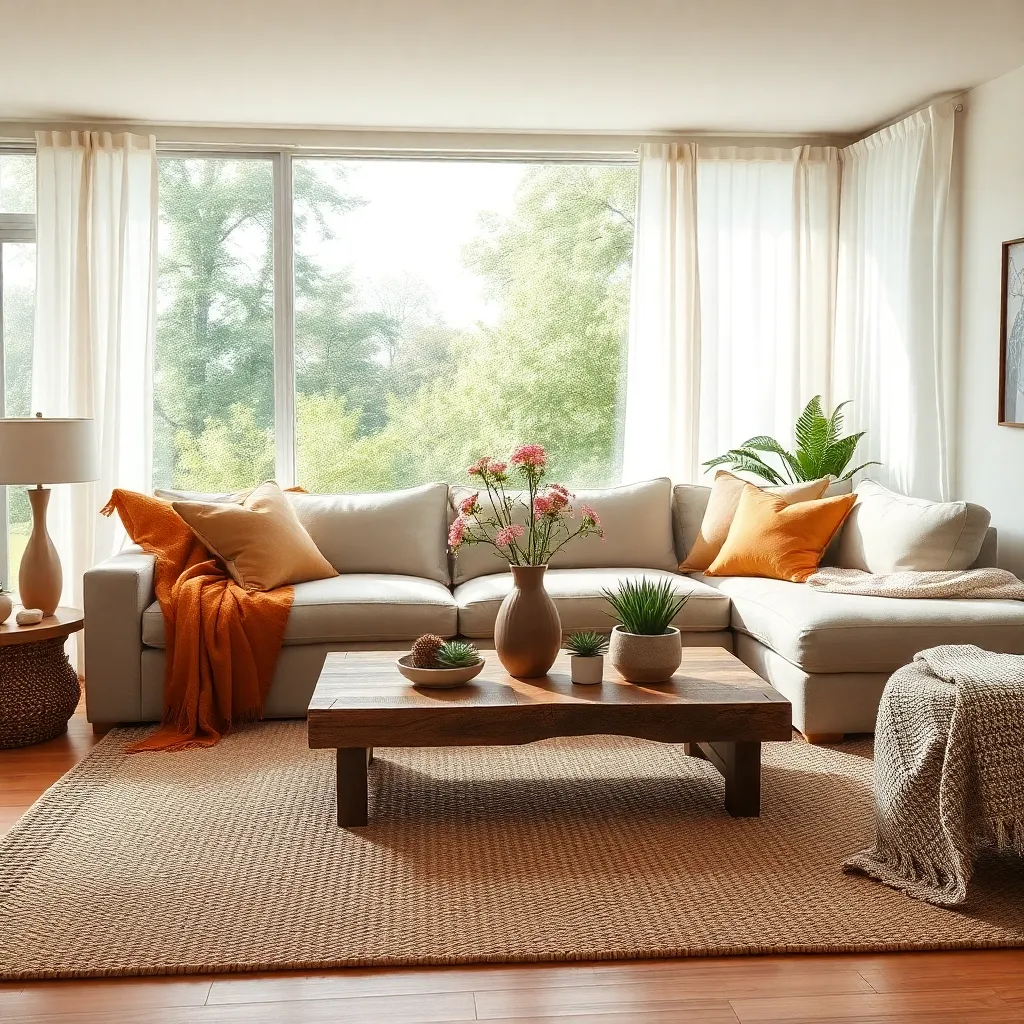
Bringing the outdoors inside is a timeless approach to refreshing your home environment. To achieve this, consider using natural materials like wood, stone, and bamboo for furniture and accents. These elements inherently carry the essence of the outdoors and can be seamlessly integrated into any room, from living areas to bedrooms.
For a cozy and inviting atmosphere, opt for a neutral color palette inspired by nature—think earthy browns, soft greens, and sandy beiges. These colors provide a calming backdrop and can be easily paired with vibrant accents like cushions or throws in floral patterns. This combination not only enhances the connection to the natural world but also allows for versatility in styling, catering to both modern and traditional aesthetics.
Arranging plants throughout your interiors can significantly enhance the outdoor-inspired vibe. Use a mix of large potted plants, such as fiddle leaf figs, and smaller succulents or ferns to add texture and depth. Strategically place plants near natural light sources, such as windows or glass doors, to mimic their outdoor environment and ensure they thrive.
Consider incorporating furnishings made of rattan or wicker, which offer both durability and a distinctly natural look. These materials are perfect for creating a relaxed, summery feel and work well in spaces like sunrooms or covered patios. Layer these textures with soft textiles such as woolen blankets or cotton cushions to provide warmth and comfort while maintaining the connection to nature.
Conclusion: Growing Success with These Plants
Incorporating natural elements into your home can significantly enhance the intimacy and warmth of your relationship. We’ve explored 11 smart ways to do this, from using indoor plants to promote calmness, to harnessing natural light for a positive ambiance, incorporating earthy textures for a cozy feel, and adding water elements to create a serene environment. We also discussed the emotional impact of natural colors, the grounding effect of wooden accents, the connection fostered by nature-inspired art, and the tranquility provided by natural scents. Additionally, the importance of open spaces for communication, the nurturing effect of an outdoor view, and the restorative power of natural sounds were highlighted.
As a first step, pick one element from the list that resonates with you and your partner and introduce it into your home this week. This small change can inspire deeper connection and harmony.
Remember to save or bookmark this article as a valuable guide to revisit and refine your sanctuary of love. By embracing nature in your living space, you’re nurturing not just your home, but also the foundation of your relationship. Here’s to a future filled with love, growth, and natural beauty in every corner of your life.
